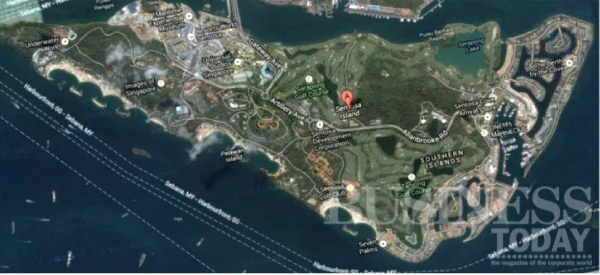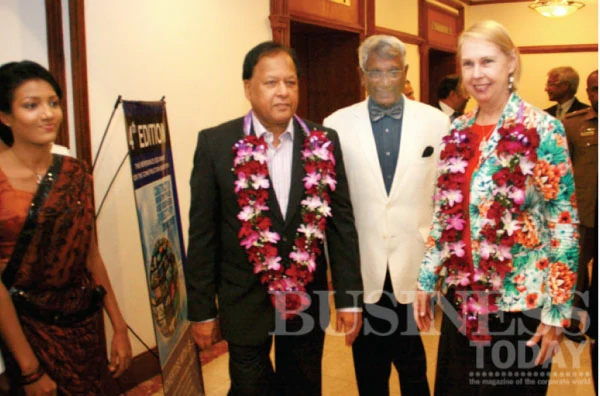
Excerpts from the speech made by Dr Surath Wickramasinghe, President – Chamber of Construction Industry, Sri Lanka at the Launch of the Build
Sri Lanka 2014.
About 15 years ago, I wrote an article on integrated tourism development. I proposed four or five mega tourism complexes around 1000 acres or more in extent in different parts of Sri Lanka to be adequate to meet the tourism demand for the next 10 to 15 years. Each of these complexes to be comprehensively designed with access to cultural and heritage locations and with provision to provide for different star categories of hotels, which will range from six star downwards to provide at least 5,000 hotel rooms and incorporating world class, leisure, recreation and entertainment facilities for the tourists to participate.
The complex could comprise many restaurants, shopping malls, theatres, theme parks, casinos, race course, polo, golf courses, sailing, water sports, adventure events like biking, climbing, hiking etc. This type of complex will generate huge benefits to Sri Lanka, not only in terms of much needed foreign exchange, and employment generation in large numbers but also to make Sri Lanka attractive to the tourists, to relax and spend their time and money on a variety of activities.
In addition to the already planned development for Colombo, one such complex could be located within close proximity to Bentota and Hikkaduwa, to the east and to the west of the expressway. Large areas of land are available in locations at Dedduwa and fronting the Madu Ganga close to Ambalangoda. These may be privately owned for development on a PPP basis. Similarly, other locations with the existing hotel infrastructure could be integrated to form mega complexes in a similar manner.
In Sri Lanka, at present we are trying to promote tourism within a restricted outlook of marketing only the beaches, wild life reserves, and the cultural sites. This type of tourism will limit the attraction of the numbers and of high value tourists. The majority of at least 50 percent of the different age groups will need more fun, sports and adventure including eco-oriented tourism. In several Asian and Mediterranean countries, tourists arrive in plane loads and Sri Lanka should aim for this model to achieve its target of 2.5 million tourists or more by 2016.
Most Asian countries including the recently emerging countries like Burma, Vietnam, Laos and Cambodia are marketing casino and golf tourism as part of the integrated tourism package. In Sri Lanka, we do not have mega casino or golf tourism projects, but only a few casinos in Colombo while there are many Bookie gambling opportunities for horse racing in most parts of Sri Lanka. Casino tourism caters for a select band of tourists mainly from the developed and developing Asian countries including China.
Sri Lanka Should Promote Investment In Integrated Tourism Development Projects In Four Or Five Selected Locations… We Can Be Competitive With Other Countries And Be Able To Capture High Spending Tourists.
In fact, in Singapore, Malaysia and other countries, the gaming taxes by the Government is mandatory. In addition, a Casino Regulatory Authority monitors the casino operations to prevent the negative aspects of damage to the social fabric, money laundering, prostitution, alcoholism, distribution of drugs, domination of organised crime, illegal money lending and also introduce a mechanism to control local participation. With this concept the security for the tourists could be ensured and the benefits to Sri Lanka would be greater than the dangers from Casino Tourism. The tourists do not have adequate opportunities to relax and spend their time and money. At least 50 percent would like to participate in different activities, while on holiday, specially the young, besides only travelling to places of interest.
Golf tourism vacations are the latest enthusiasm among the elite in business, professionals and the sports loving public. The Japanese, Koreans and now the Chinese and other Asians in large numbers are regularly visiting different countries in Asia to play golf, on branded courses designed by world renowned golfers. These golfers spend money generously for hotel accommodation, travelling internally and playing golf. We must definitely make it a policy to promote tourism to encourage investors to invest in golf courses by facilitating to source land in close proximity to tourism complexes in different parts of Sri Lanka. Even in Singapore, which has limited land resources, there are over 20 golf courses. In Thailand there are over 100 branded golf courses, in Bangkok, Chiang-Mai, Pattaya and Phuket. In Vietnam, even in regional cities like Danang within the last five years they have established five branded golf courses. The golf courses are full of tourists even on week days.
In Sri Lanka, there are only four golf courses in different parts of the country and none of them are branded to attract golf tourism. Therefore, to “kick start” in the Colombo region there must be at least five branded golf courses not only to attract overseas golfers but also to attract international corporate businesses.
On the other hand, horse racing is also getting popular in Asia as a International sport and race meetings are televised and transmitted to other neighbouring countries. This same concept could be adapted in Sri Lanka as we could transmit the races to South Asia and the Middle East and include race courses as part of the Integrated Tourism Development Project.
Therefore, Sri Lanka should promote investment in Integrated Tourism Development Projects in four or five selected locations on the lines described above. If so, we can be competitive with other countries and be able to capture high spending tourists.
With this concept, Sri Lanka will be able to promote sustainable tourism, while leaving the rest of the country including the beaches to remain in its natural form for the present and the future generations to enjoy. If not, with stand-alone Tourism Development Projects popping up in all parts of the country where there is a beach or waterfront will naturally destroy the environment and the rural life of the people.







